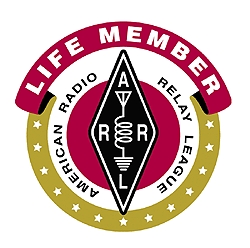When running in the Digital Voice (DV) mode, the IC-80AD is capable of sending “low-speed” data along with the voice stream. One of the possible uses for that data is position reporting. That position data can be shared over the internet via a D-Star Gateway, making it possible to use a mapping service such as www.aprs.fi or www.openaprs.net to map your radio position. Position data might be useful for reporting your progress up a summit for a SOTA (Summits on the Air) activation, for example.
The HM-189GPS Speaker/Mic includes a GPS receiver. If you properly configure the IC-80AD, you can report your position whenever you transmit audio or automatically (generally frowned upon). Your data is picked up by the Gateway receiver and converted into APRS (Automatic Packet Reporting System) strings, and shipped out onto the internet.
It isn’t very difficult to setup the radio in theory, but Icom’s less than stellar manual makes the task a challenge by failing to explain how things work in general, or explaining in one place what needs to be done. The rig’s keypad interface doesn’t help because all the required settings are spread into unrelated menu branches. It also doesn’t help that different Icom models use different names for the same things, and organize things in different ways. Despite the fact that Icom has been pushing D-Star radios for more than a decade they still haven’t figured out how to make an easy to use radio or write a decent manual.
Step One is to get your radio working in the DV mode through your local D-Star repeater (see my prior post for that).
Step Two is to decide what your objectives are. Are you looking to share your position data with internet mapping services, or are you trying to report your position so that your fellow hams can see your lat/lon/altitude on their rig’s display. The reason this is important is there are two different modes of configuring the 80AD. The “newest” is called “DVA” and is a bit easier to setup. So if you mostly want to use the internet mapping services, this might be a good choice. But it has two limitations: it doesn’t report your altitude, and that data can’t be shown on most rig’s display. The original mode, called “DVG” overcomes those two limitations, but is harder to setup.
Let’s assume you want to configure your 80AD to use the DVG “GPS Mode”. The required settings are located in several different menu branches, but the general items that need to be configured are as follows:
- Set GPS-TX to DVG (Puts the 80AD into DVG mode)
- Set RMC to ON (Send “Recommended Minimum” GPS Data (position/track — but no altitude)
- Set GGA to ON (Send 3D data including altitude — but no track info)
- Set GLL to OFF (Don’t send position in Loran format)
- Set GSA to OFF (Don’t send satellite data)
- Set VTG to OFF (Don’t send velocity and track data)
- Set GSV to OFF (Don’t send satellites in view)
- Set GPS.ATX to OFF
- Set MESSAG/TX GPS to the correct GPS Message
The parameters RMC/GGA/GLL/GSA/VTG/GSV are all abbreviations for NEMA GPS Strings (like “$GPSRMC”) that are output by the HM-189GPS Speaker/Mic. Those that are turned ON will be sent by the radio. The more strings turned ON, the more time required to send them. I’ve read you should never have more than four turned ON. RMC and GGA are the two most common.








